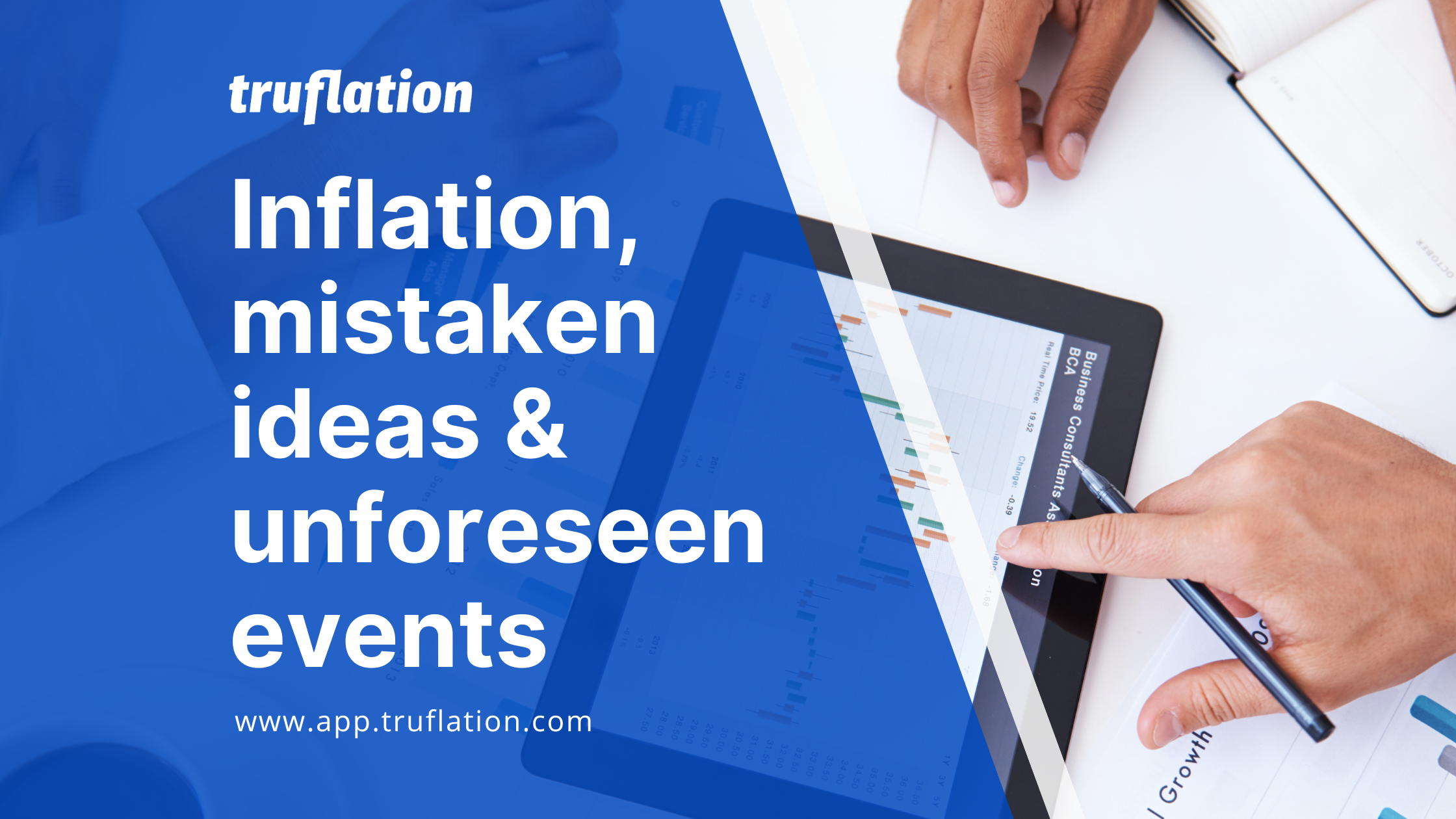
Inflation, mistaken ideas & unforeseen events
Published 19 Jul, 2022
Everyone is talking about inflation, and that is the problem. In a recent interview, Mervyn King (former Head of the BoE) argued that the current high inflation we are experiencing is a combination of bad luck and mistaken ideas about economics.
His thoughts sum up where we have been and where we are going:
Mistaken Idea #1: Printing lots of money in response to the Pandemic was the right thing to do.
During COVID, governments used fiscal policy to provide stimulus/economic support directly to people and businesses, which was the right thing to do. However, the mistaken idea was to think that the correct policy response by Central Banks globally was to increase money supply through bond-buying programs.
The pandemic was not a downturn in the business cycle. The Federal Reserve printed money at a rate not seen since WW2. US money supply increased by 25% a year. You do not have to believe in a link between money supply and inflation, but you should be asking yourself what is going on here?
When you have too much money chasing too few goods, this can fuel inflation in two ways. Firstly, it fuels investment and increases aggregate demand in the economy. This artificial increase in demand pushes prices up; this is called demand-pull inflation (think COVID Stimulus/pent-up demand/excess savings in economies opening up after lockdowns).
Secondly, this price increase is then ‘pushed’ onto consumers by companies as the costs of inputs increase; this is called cost-push inflation (think COVID supply chain disruptions/reduced production/lack of supply of building materials). We can see both these drivers of inflation happening in parallel at Truflation.
Mistaken Idea #2: Economic models describe how the world works.

Central banks have been modeling how the economy works with a fixed 2% inflation target which is not the case after COVID. In a market economy, interest rates are the cost of capital - how much it costs to borrow or lend money. How can this capital be allocated effectively in a market economy with ultra-low interest rates? The simple answer is that it doesn’t when returns are ‘negative’ adjusted for inflation. Low-interest rates disincentivize savings and fuel increased borrowing. Why use your money when you can borrow more and invest it in appreciating assets such as property, stocks, crypto, etc.? This is what we have seen for the past decade since the financial crisis in 2008.
The question should be, where does the ‘real’ (adjusted for inflation) interest rate need to be to reduce inflation in the economy and create demand equilibrium? Currently, the ‘real’ interest rate is pretty much negative-adjusted for inflation; but we need it to return to a positive ‘real’ interest rate quickly!
Unforeseen events
Economists make forecasts every year for the economy. They are usually inaccurate because unforeseen events happen, and we make assumptions based on past events. The future is unpredictable.
Inflation would have been high in 2022, even without the additional supply shock of Russia’s invasion of Ukraine. Bad weather and low crop yields globally during COVID had already been driving up the price of food and foodstuffs in 2021. Refinery shutdowns and reduced diesel and jet fuel production during the pandemic also exacerbated supply problems. Economies reopened after COVID released pent-up demand for energy, with travel returning to pre-COVID levels this year. In many ways, it is a perfect storm of events that have driven energy and food prices to new highs. Together these combined to recreate 1970s-style high levels of inflation on top of a very tight labor market.
Interest rates influence consumers’ and businesses’ behaviors around wage demands, spending, and future expectations of growth. In a normal business cycle, you raise interest rates to cool demand and reallocate capital towards savings. When interest rates rise, the costs of servicing debts rise for businesses, consumers, and governments. Most interest rate changes take between 12 and 18 months to ripple outward through the economy from banks to businesses and consumers through higher borrowing costs, a weaker outlook for growth, and reduced job openings.
The risks ahead are firmly on the side of inflation being more ingrained in the economy.
The Fed increased interest rates by 0.75% last month, the largest hike since 1994, and more monthly increases are on the way for the rest of this year. Getting the balance right and executing a soft landing will be no easy feat with so many ‘events in motion’ beyond the control of central banks, consumers, or governments.
The Fed is currently in a tricky situation where the economy is quite strong, and US unemployment is relatively low. The problem is how to focus primarily on reducing inflation by raising interest rates to their highest level in decades without damaging the economy and potentially increasing unemployment.
The expectation is that the Fed is likely to raise interest rates to 3.5% to 4% by the end of the year and maybe beyond into 2023. A ‘2% inflation’ world is not where we will be for the foreseeable future.
We all need to prepare for higher interest rates over the longer term.
Written by CeAnn Simpson
About Truflation
At Truflation, we believe in data and methodology, not sentiment and surveys. Check our Truflation Dashboard. We created Truflation based on real market price data collected from 30 different data sources daily to deliver crucial business intelligence around inflation. We provide a daily, unbiased, data-driven, real-market US inflation rate and other on-chain economic metrics to DeFi products and Web3 applications.
Our mission is to offer the most objective, decentralized, and current economic and financial information alternative in the form of on-chain price indexes to enable a new generation of blockchain products. We help developers create tools that help people maintain their purchasing power, navigate their portfolios through a challenging macroeconomic landscape, and propel the DeFi space into the new era of an inflation-proof and blockchain-powered economy.
Get Exclusive Insights
with our Weekly Newsletter